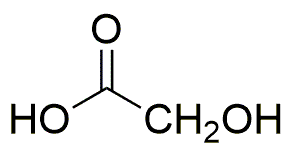Glycolic acid solution, 70 wt. % in H2O is widely utilized in research focused on:
- Cosmetic Formulations: This solution is a key ingredient in many skincare products, particularly for its exfoliating properties. It helps to remove dead skin cells, promoting a smoother and more radiant complexion.
- pH Regulation: In various industrial applications, glycolic acid acts as a pH adjuster. Its ability to lower pH levels makes it valuable in formulations like hair care products and cleaning agents.
- Biomedical Research: Researchers use this compound in studies related to skin penetration and drug delivery systems, as its small molecular size allows for effective transdermal absorption.
- Textile Industry: Glycolic acid is employed in the textile sector for dyeing processes, enhancing the uptake of dyes on fabrics and improving colorfastness.
- Food Industry: It serves as a food additive, where it can be used as a preservative or acidity regulator, helping to maintain the quality and safety of various food products.
General Information
Properties
Safety and Regulations
Applications
Glycolic acid solution, 70 wt. % in H2O is widely utilized in research focused on:
- Cosmetic Formulations: This solution is a key ingredient in many skincare products, particularly for its exfoliating properties. It helps to remove dead skin cells, promoting a smoother and more radiant complexion.
- pH Regulation: In various industrial applications, glycolic acid acts as a pH adjuster. Its ability to lower pH levels makes it valuable in formulations like hair care products and cleaning agents.
- Biomedical Research: Researchers use this compound in studies related to skin penetration and drug delivery systems, as its small molecular size allows for effective transdermal absorption.
- Textile Industry: Glycolic acid is employed in the textile sector for dyeing processes, enhancing the uptake of dyes on fabrics and improving colorfastness.
- Food Industry: It serves as a food additive, where it can be used as a preservative or acidity regulator, helping to maintain the quality and safety of various food products.
Documents
Safety Data Sheets (SDS)
The SDS provides comprehensive safety information on handling, storage, and disposal of the product.
Product Specification (PS)
The PS provides a comprehensive breakdown of the product’s properties, including chemical composition, physical state, purity, and storage requirements. It also details acceptable quality ranges and the product's intended applications.
Certificates of Analysis (COA)
Search for Certificates of Analysis (COA) by entering the products Lot Number. Lot and Batch Numbers can be found on a product’s label following the words ‘Lot’ or ‘Batch’.
*Catalog Number
*Lot Number
Certificates Of Origin (COO)
This COO confirms the country where the product was manufactured, and also details the materials and components used in it and whether it is derived from natural, synthetic, or other specific sources. This certificate may be required for customs, trade, and regulatory compliance.
*Catalog Number
*Lot Number
Safety Data Sheets (SDS)
The SDS provides comprehensive safety information on handling, storage, and disposal of the product.
DownloadProduct Specification (PS)
The PS provides a comprehensive breakdown of the product’s properties, including chemical composition, physical state, purity, and storage requirements. It also details acceptable quality ranges and the product's intended applications.
DownloadCertificates of Analysis (COA)
Search for Certificates of Analysis (COA) by entering the products Lot Number. Lot and Batch Numbers can be found on a product’s label following the words ‘Lot’ or ‘Batch’.
*Catalog Number
*Lot Number
Certificates Of Origin (COO)
This COO confirms the country where the product was manufactured, and also details the materials and components used in it and whether it is derived from natural, synthetic, or other specific sources. This certificate may be required for customs, trade, and regulatory compliance.


